16 Cardiac AP
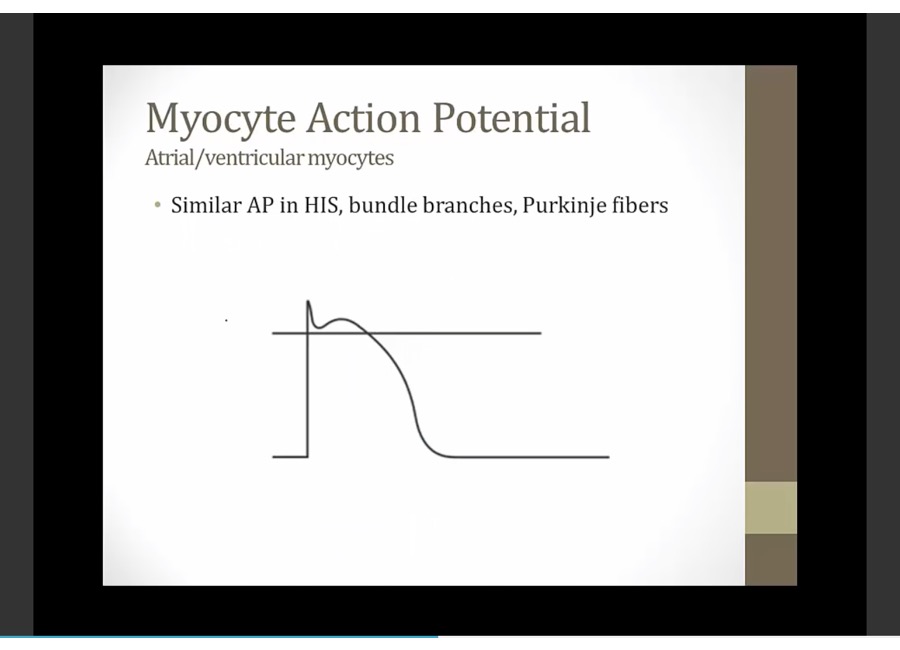
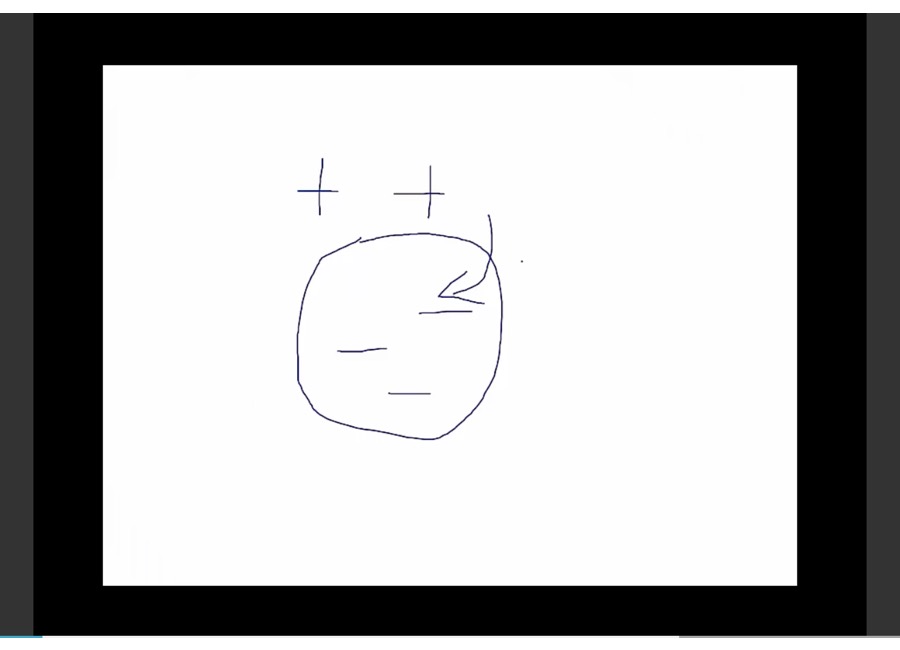
- at rest, pumps maintain ion distribution
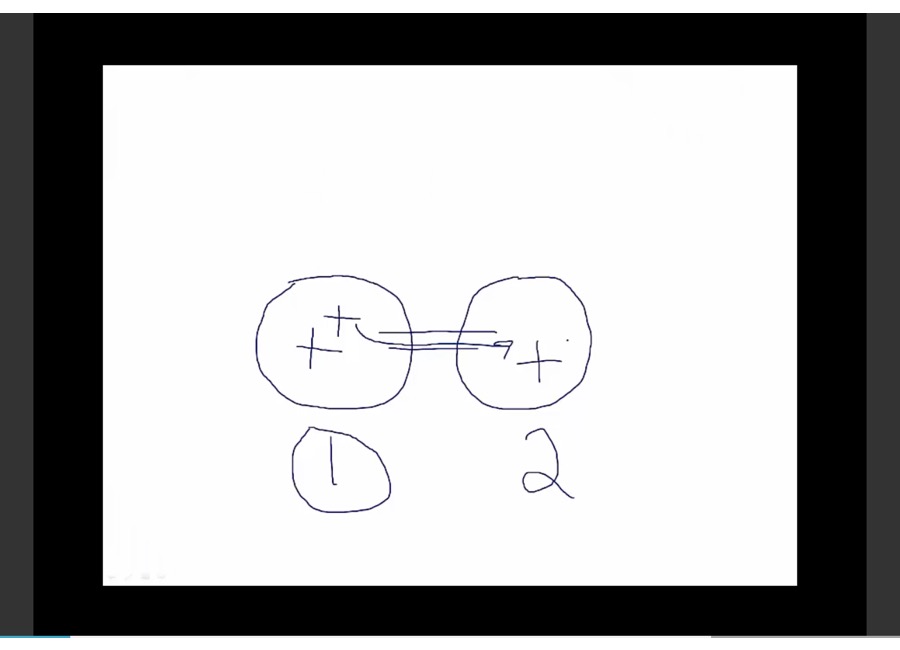
- connected via gap junction
- if 1 depolarizes with positive ions inside, some positive go to 2, 2 depolarizes
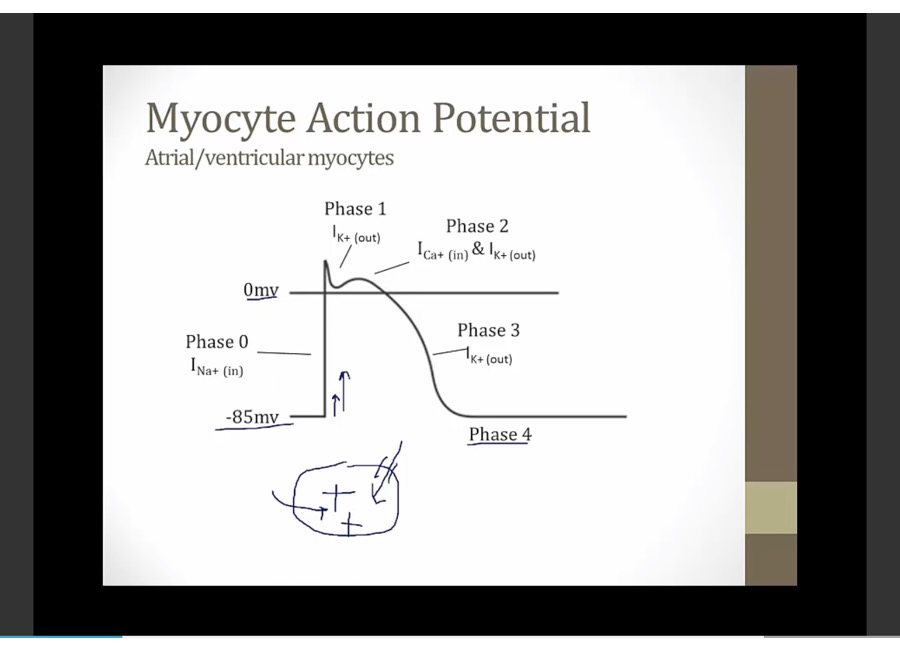
- phase 4: myocyte at rest, -85
- phase 0: voltage begins to rise from positive ions entering via gap junction, Na channels open, further rise positive charges, positive loop
- phase 1: voltage become positive, Na channels close, K open and leak out, lower voltage
- phase 2: competing Ca in and K out, cancelling one another = plateau
- phase 3: Ca close, only K
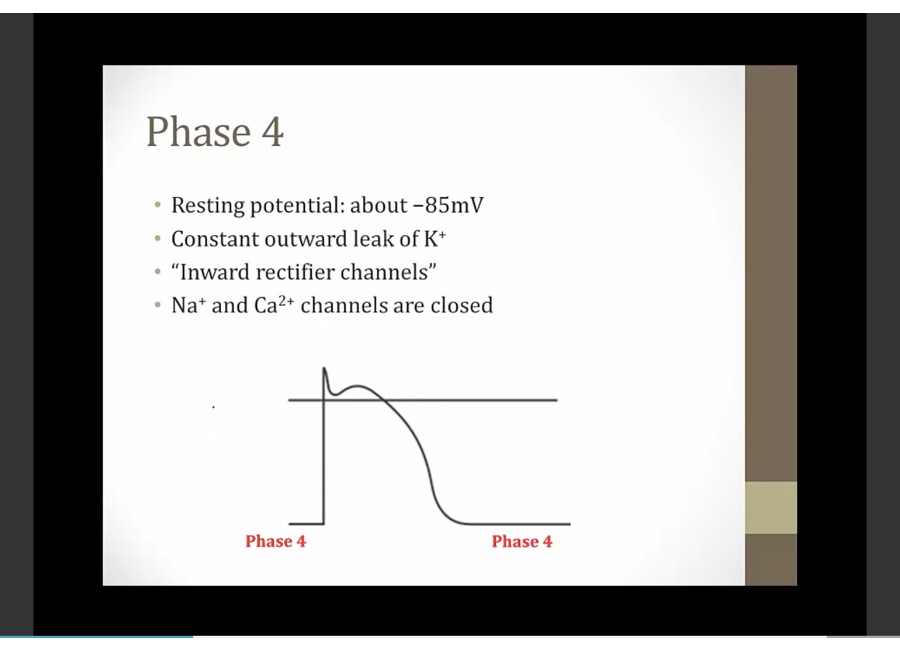
- -85 maintained by inward rectifier channels: K out
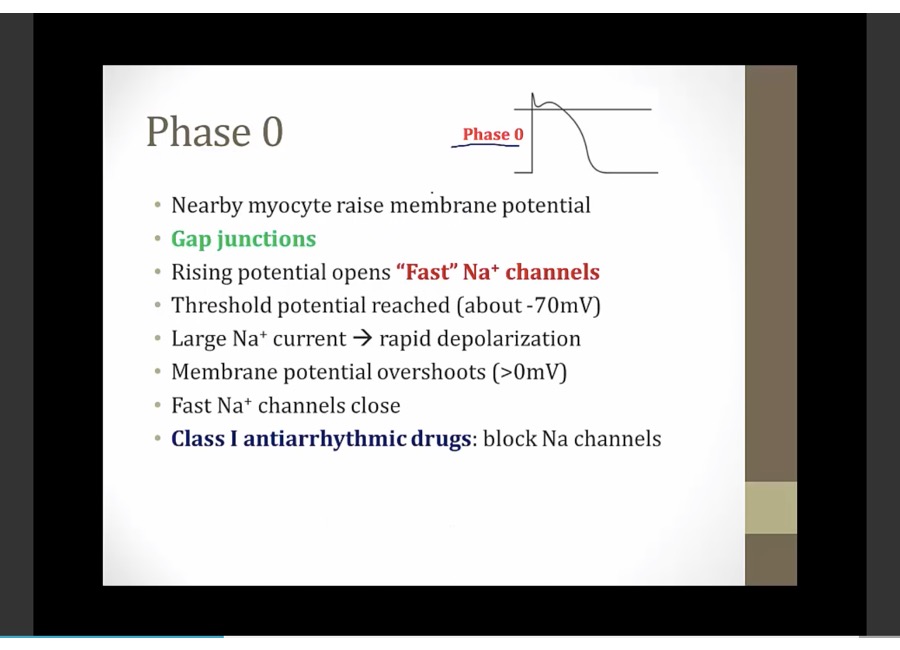
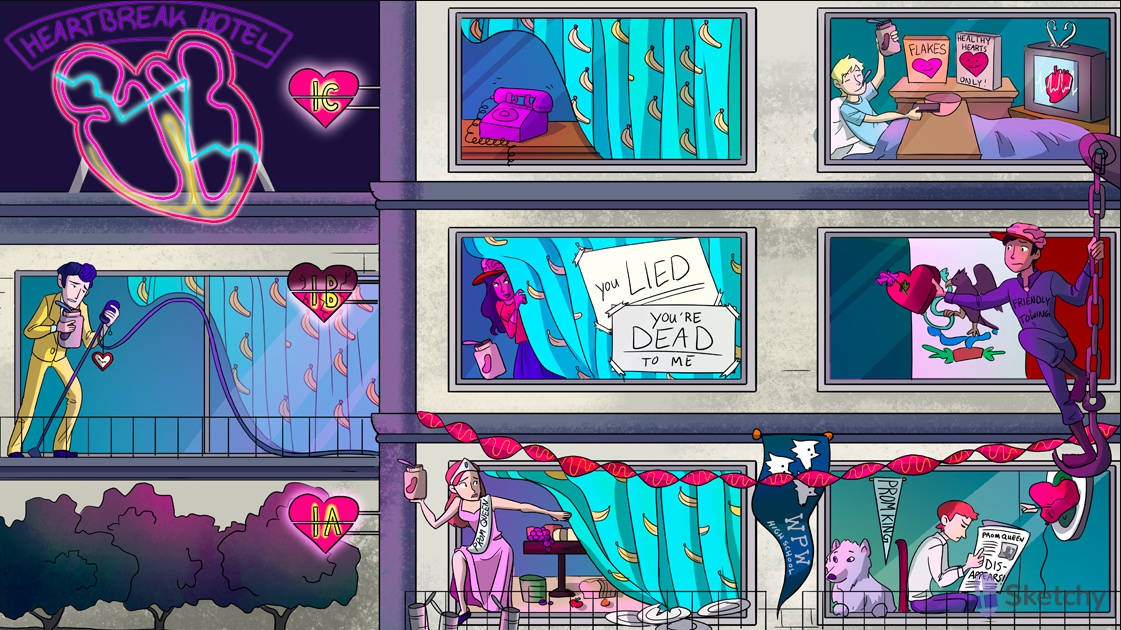
- Soloist: class I antiarrhythmics
- Soloist holding peanut butter jar: class I antiarrhythmics block sodium channels (phase 0)
- Soloist tipping mic stand: class I antiarrhythmics decrease the slope of the phase 0 upstroke (slows conduction of the cardiac AP)
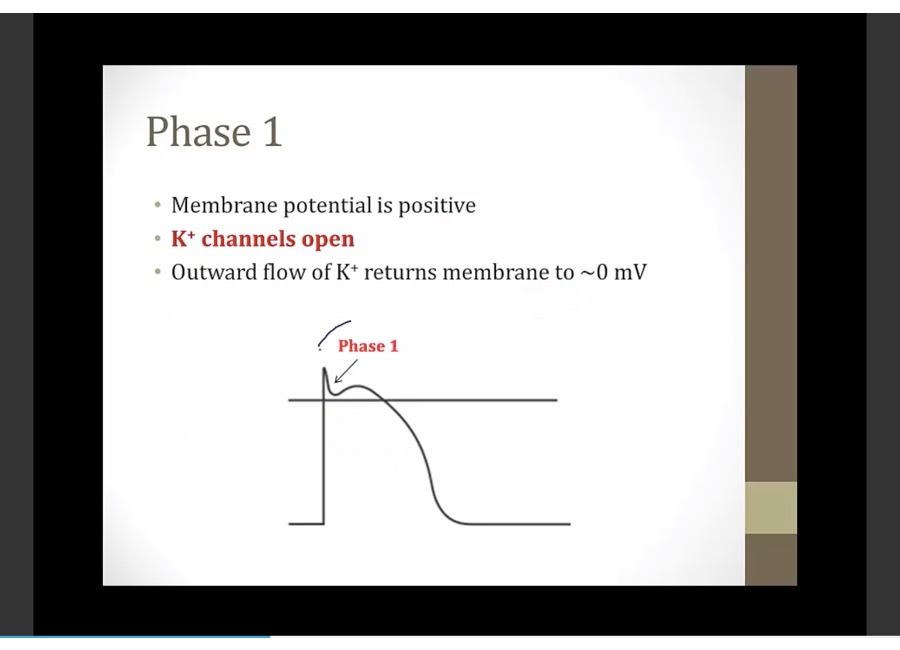
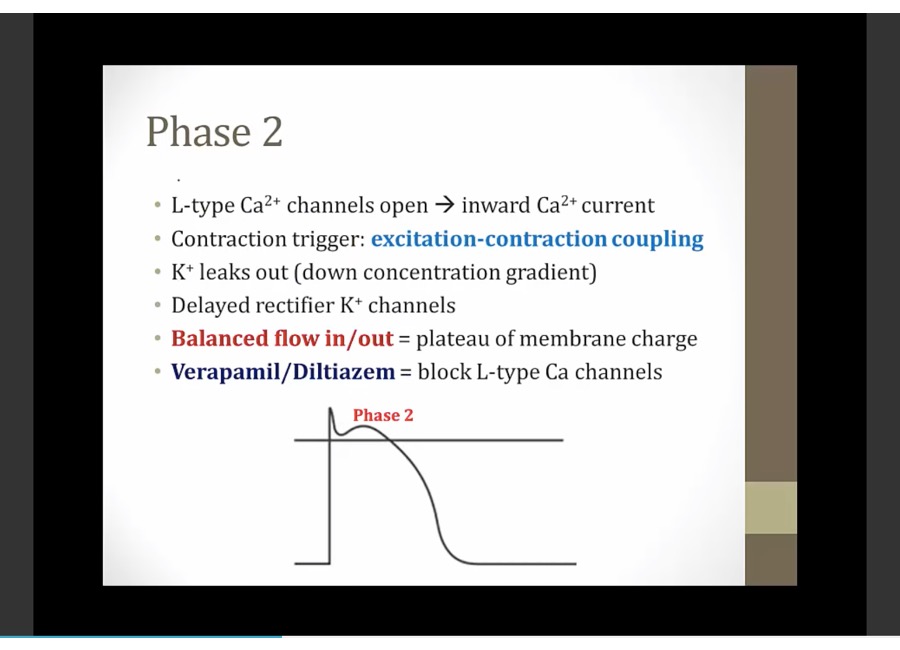
- Ca ion trigger mechanical contraction of myocyte
- excitation-contraction coupling: Ca connects electrical activity and mechanical activity of myocytes
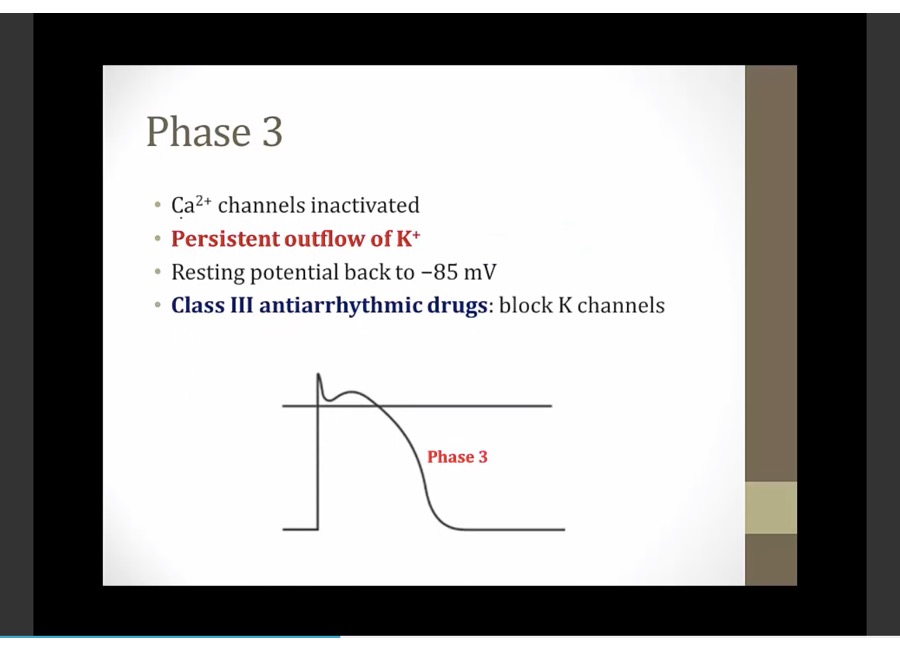
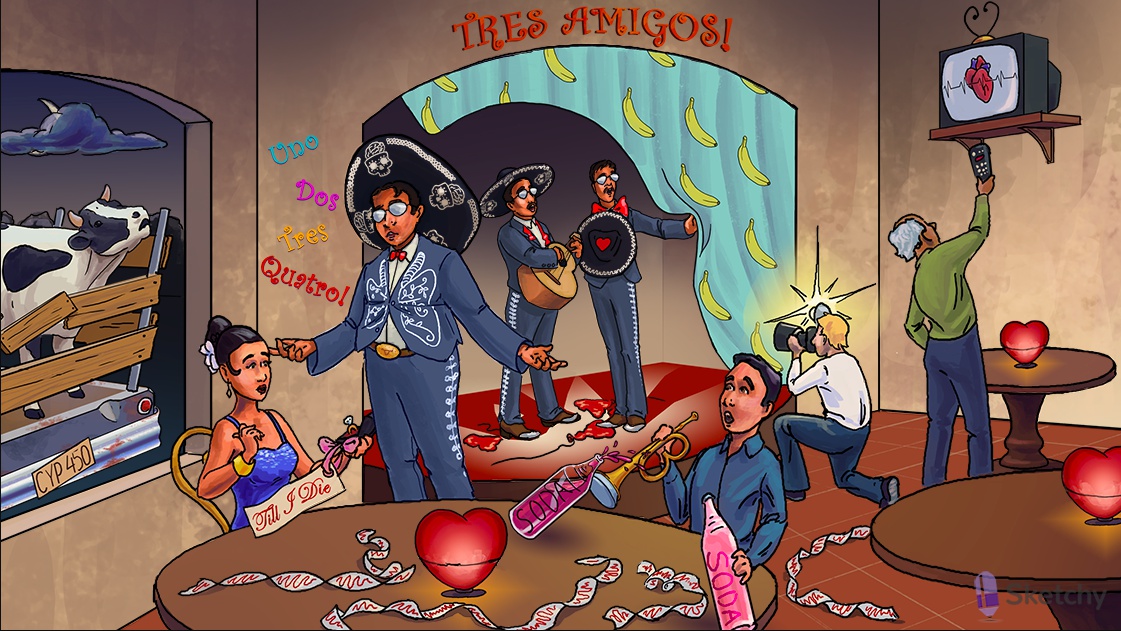
- Pushing away the curtain: class III antiarrhythmics block K+ channels prolonging phase 2 and 3 of the cardiac action potential -> prolonged refractory period
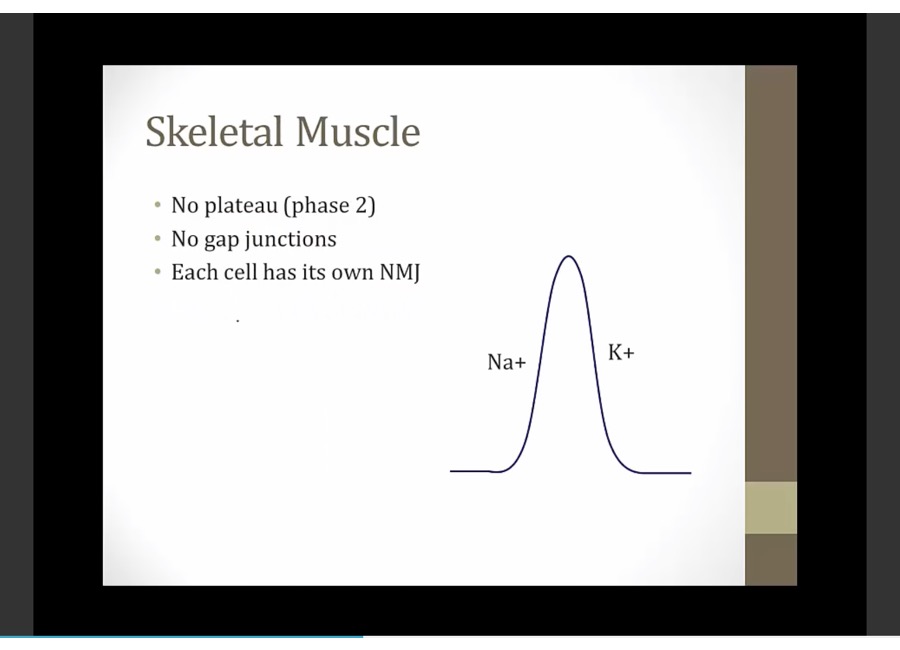
- No Ca involvement
- each cell individually depolarized by neuron
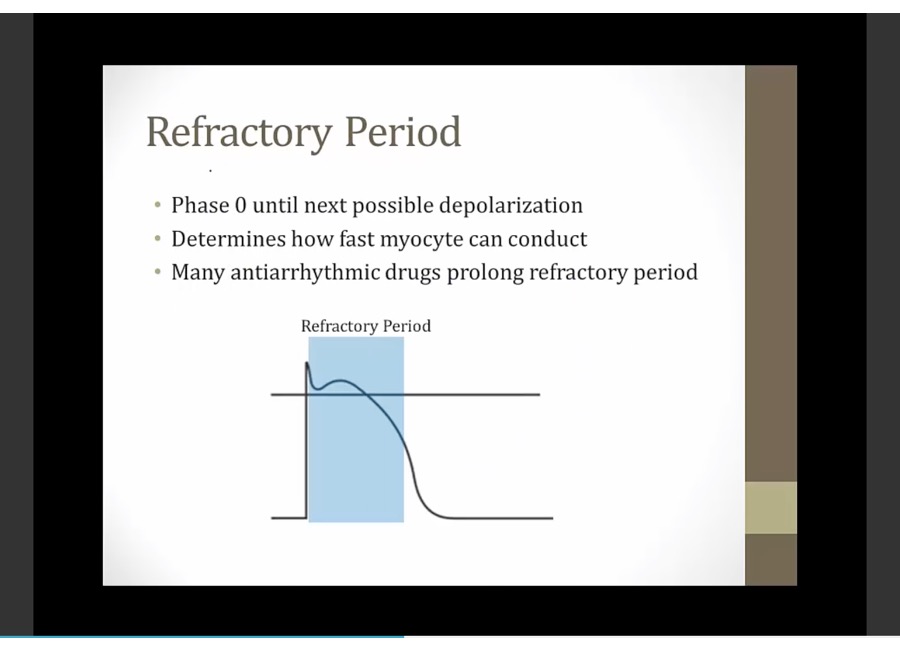
Pacemaker AP
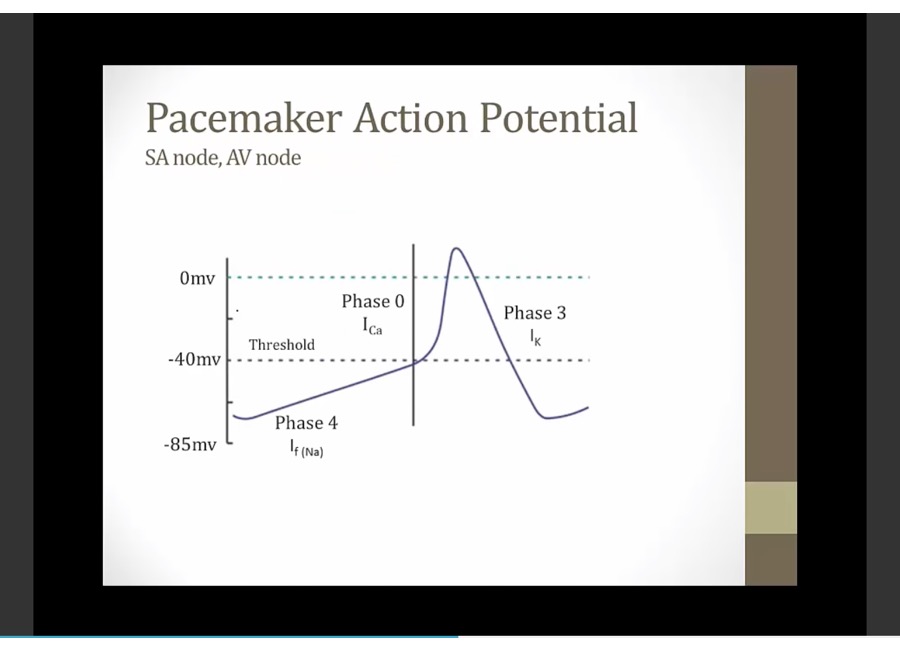
- slightly higher resting voltage > -85
- no plateau
- phase 4: slowly drifts upward, funny current allow Na in
- phase 0: - 40 threshold, Ca open, inward Ca
- phase 3: above 0, Ca close, K open
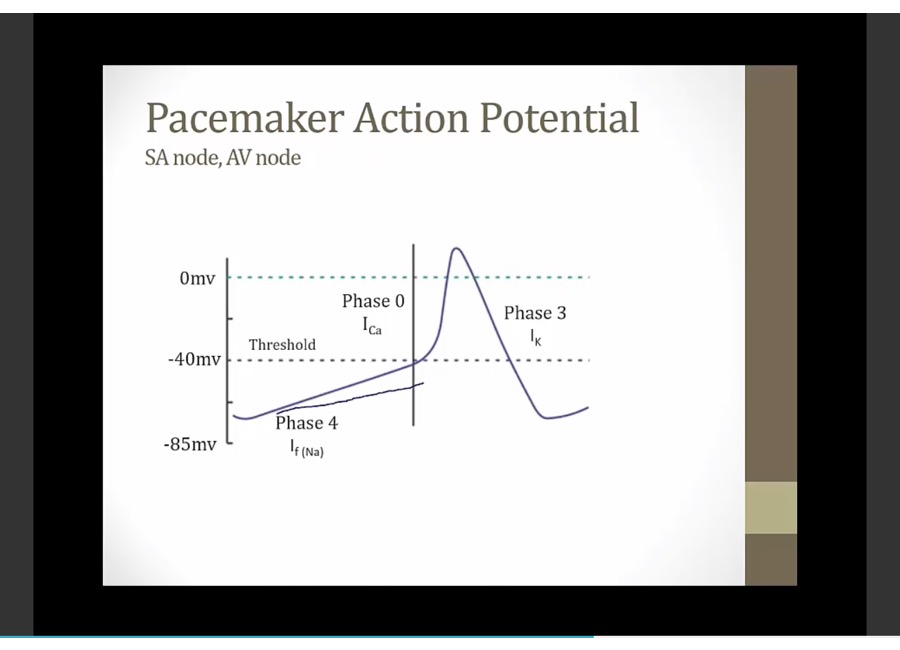
- AV node, same shape, phase 4 slower, longer to reach threshold, usually depolarized by SA signal before threshold
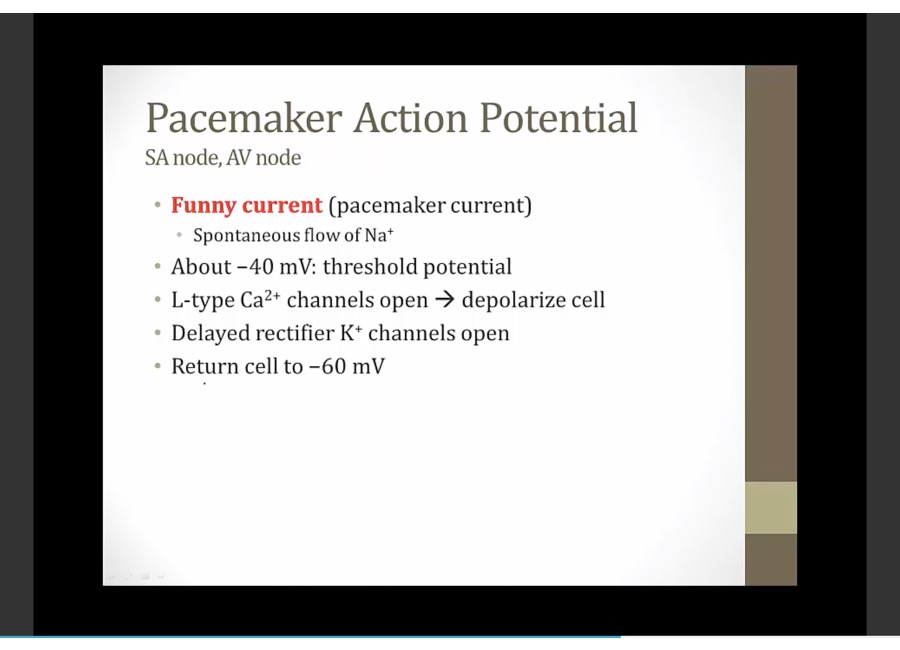
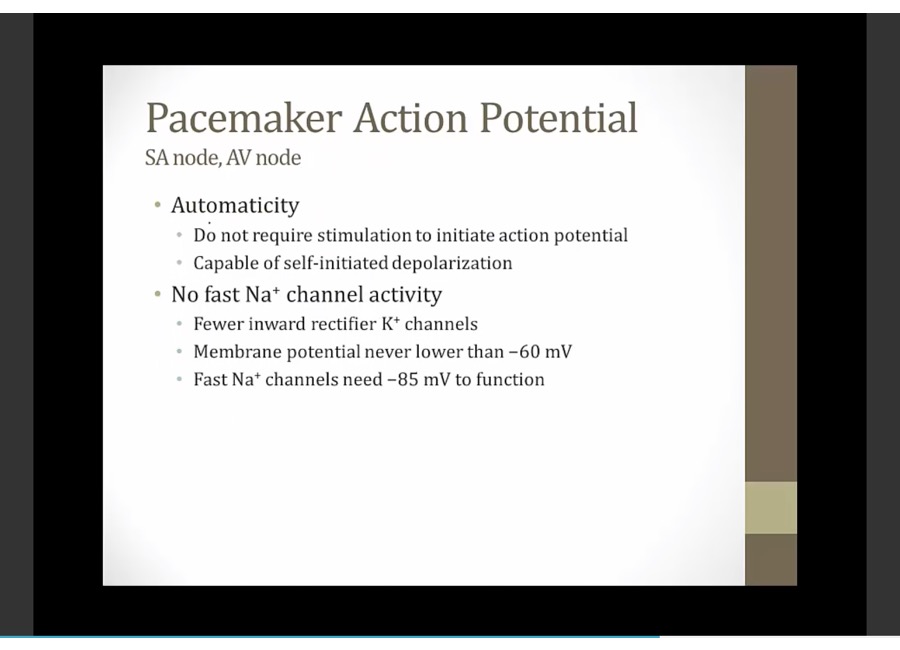
- fast Na need -85 to function: fewer inward rectifier K (-85 resting membrane) > resting always above -60 > fast Na does not work
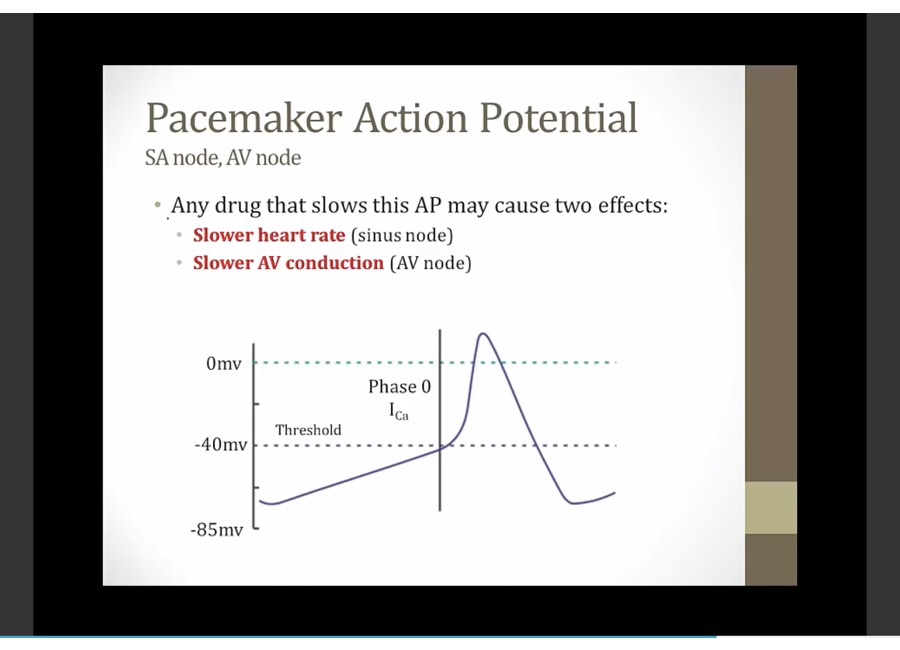
- slow AV: delay conduction from atrium to ventricle
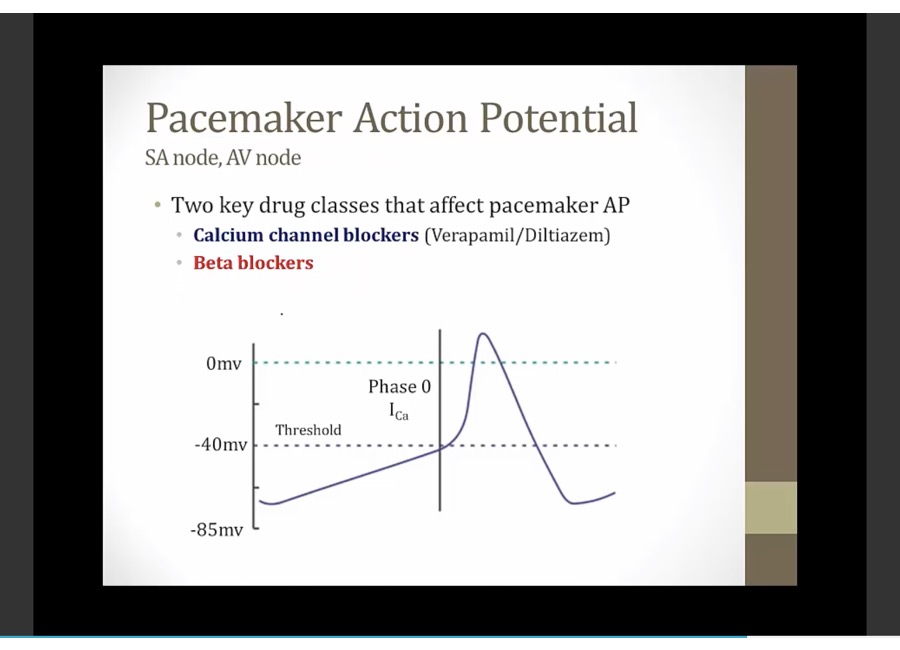
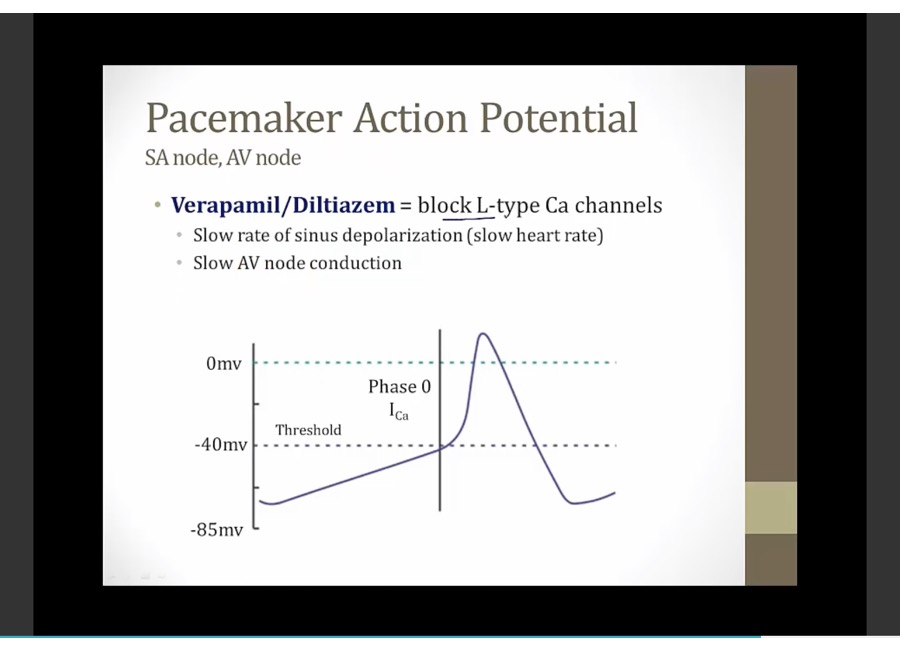
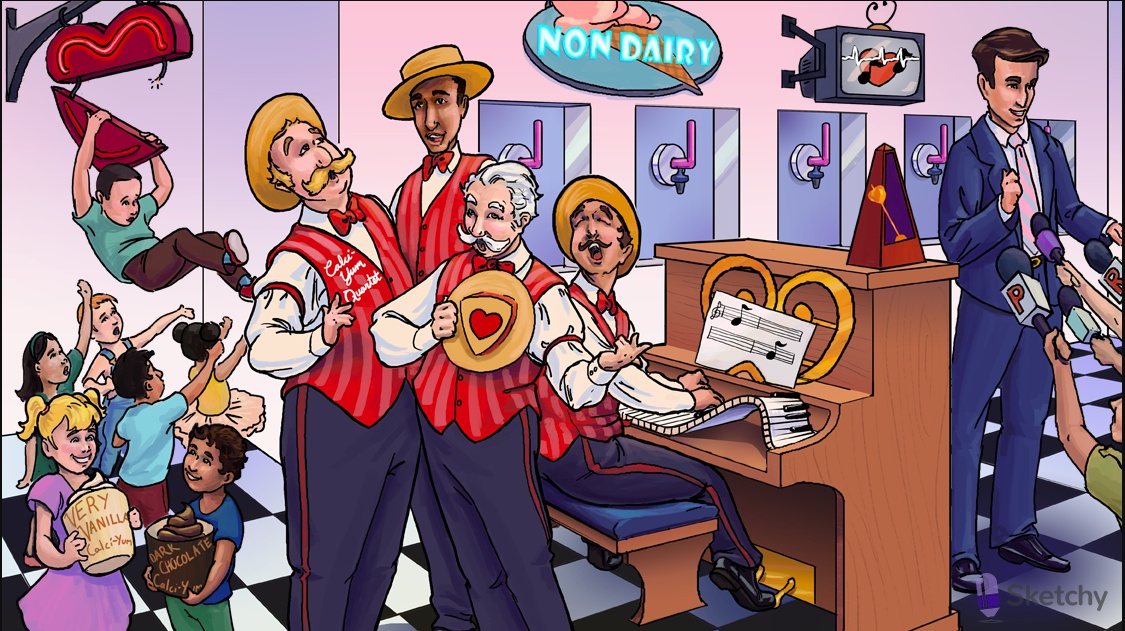
- block activated and inactivated Ca channels, not resting channels. Work more on tissues fire more frequently and exclusively activated by Ca current
- Notes: non-dihydropyridines (e.g. diltiazem, verapamil) treat arrhythmias by blocking Ca2+ current in the SA and AV nodes
- Disconnected bottom: non-dihydropyridine CCBs decrease atrioventricular conduction
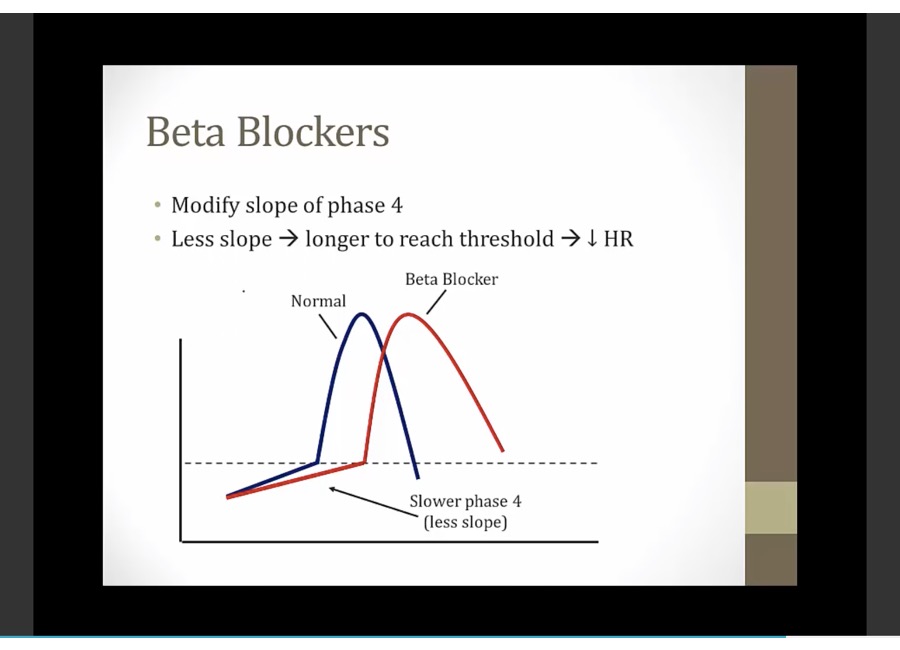
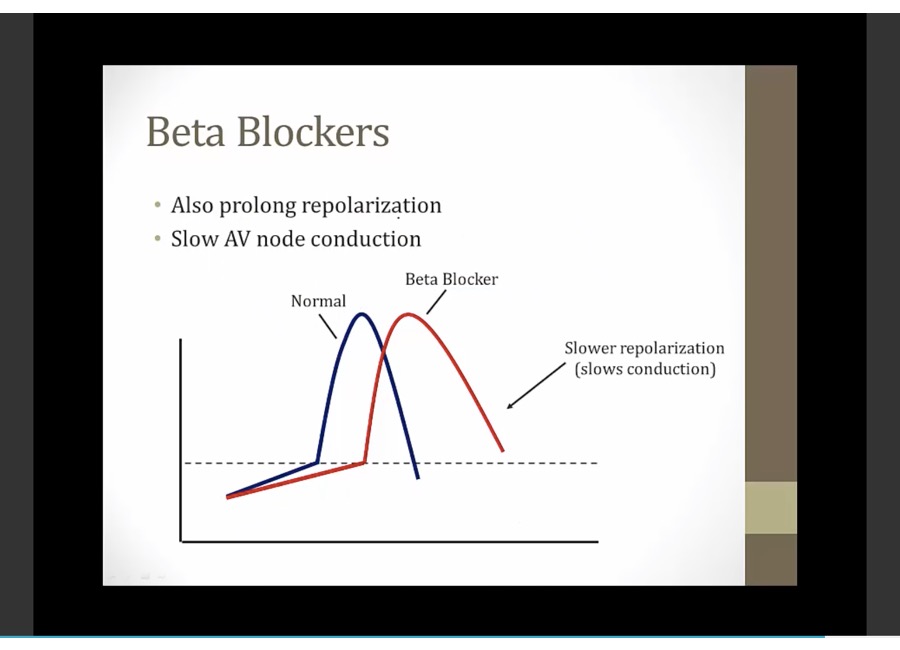
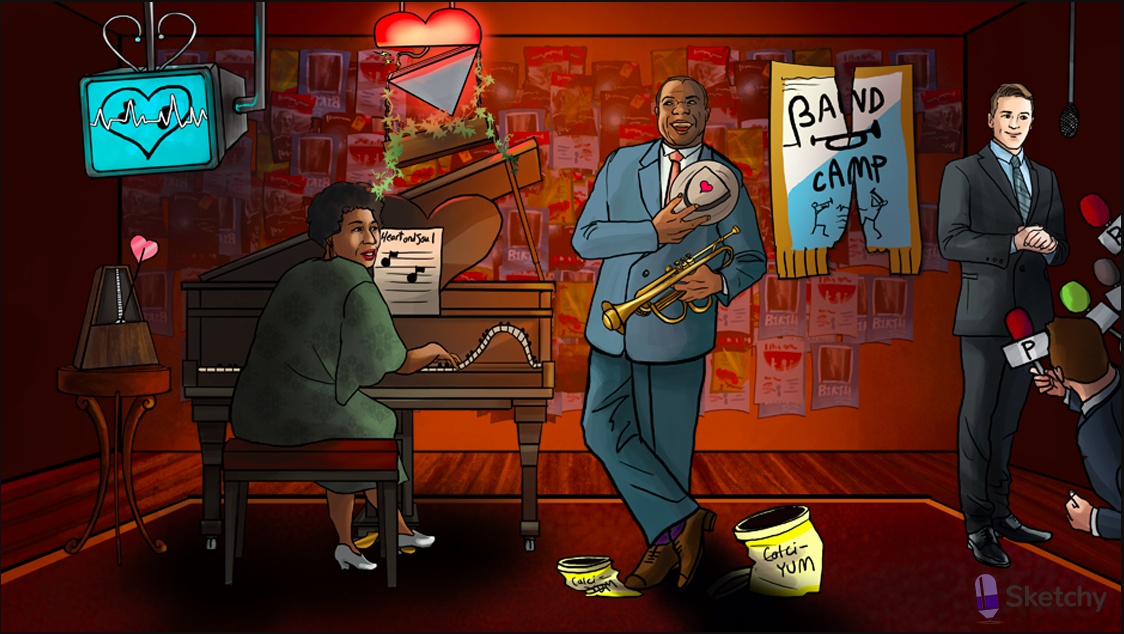
- Duet: Class 2 antiarrhythmics
- Muted beta bugle: beta blockers (class 2 antiarrhythmics)
- notes: beta blockers treat arrhythmias by blocking sympathetic input to the SA and AV nodes
- Torn band camp: beta blockers decrease cAMP
- Crushed calci-YUM ice cream cartons: decreased cAMP leads to closure of membrane calcium channels
- Sliding up the keys: beta blockers prolong phase 4 of the nodal action potential -> decreased pacemaker activity, prolonged conduction time and refractory period.
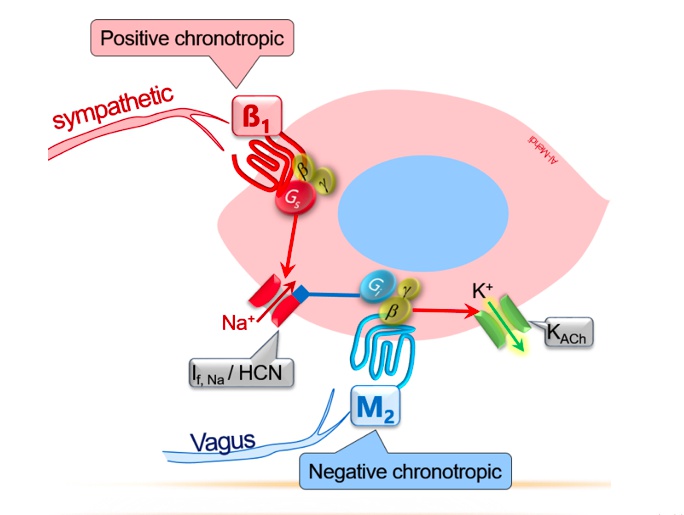
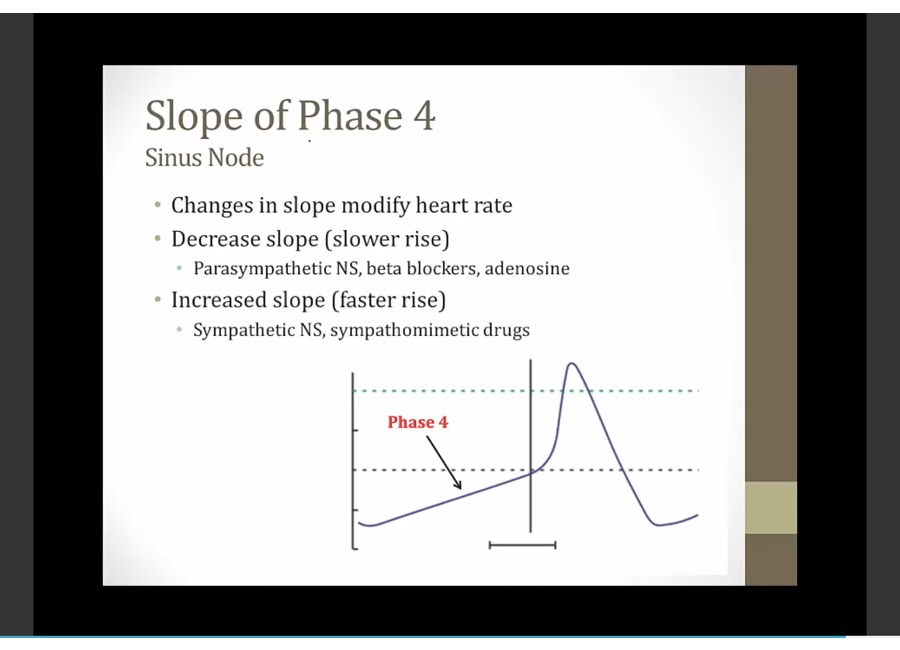
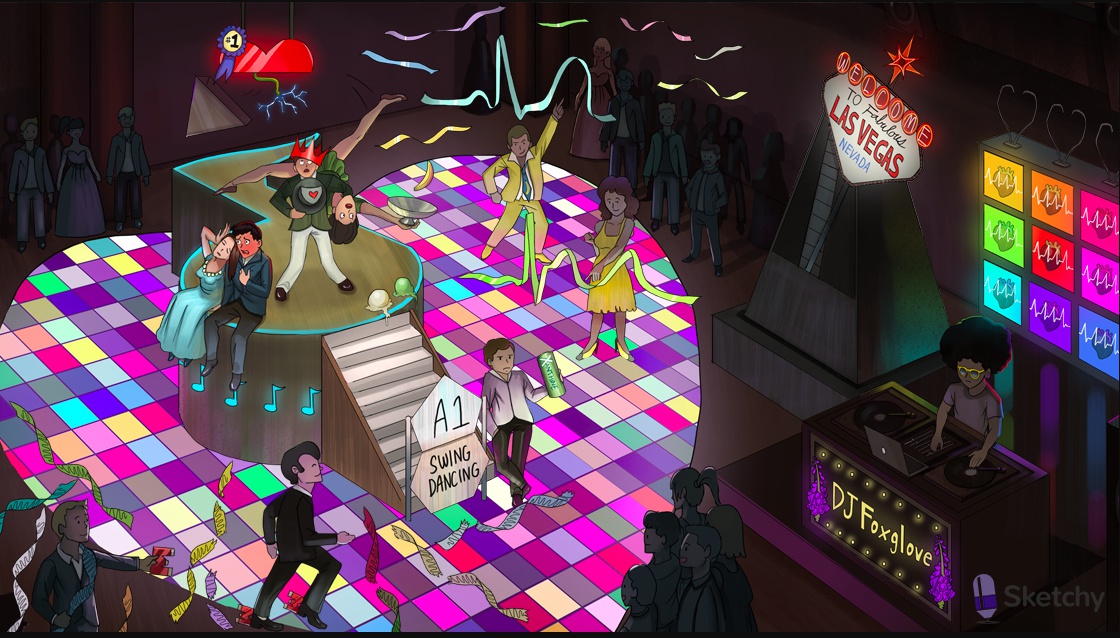
- Swing dancing: adenosine (a purine nucleoside with antiarrhythmic properties)
- Purine shaped gate: adenosine is a purine nucleotide
- A1 Swing: adenosine activates inhibitory A1 receptors on the myocardium and at the SA and AV nodes
- Falling calci-yum ice cream: activation of A1 receptors suppresses inward Ca2+ current (hyperpolarization, suppressed Ca2+ dependent AP
- Banana flying out of cup: activation of A1 receptors increases outward K+ current (hyperpolarization, suppressed Ca2+ dependent AP)
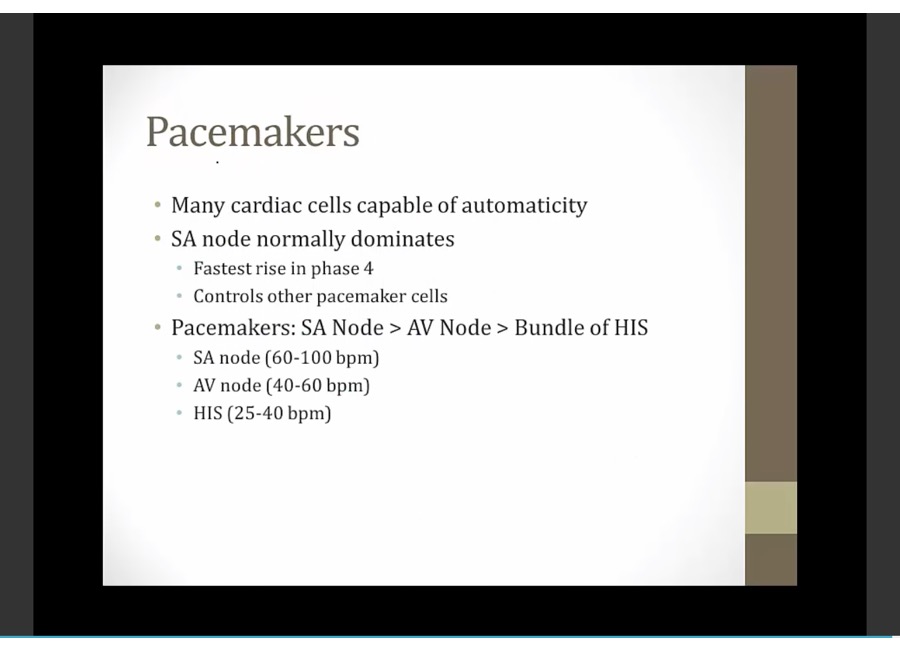
Links to this note



























